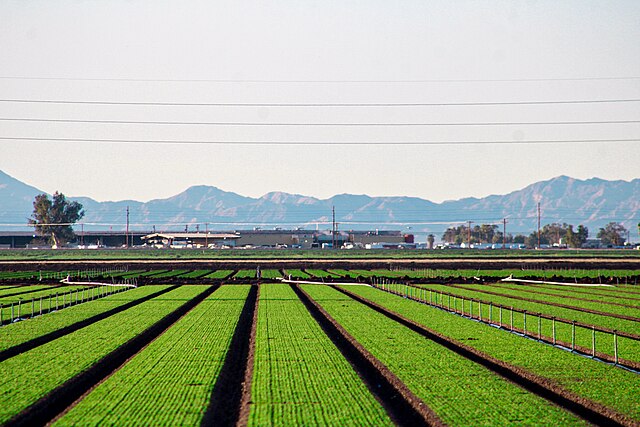The farmers of the agricultural oasis of Imperial Valley, Southern California, face a once-in-a-century sowing and harvesting disruption. A West Coast storm not seen in 84 years made landfall in Mexico last weekend and has briefly suspended farming activities.
Tropical storm Hilary landed at Baja California peninsula in Mexico over the weekend. Though now less strong than when it begun, it is the first such storm these parts since 1939.
Hilary is slated to disrupt supply chain and agriculture for a few days in Southern California, U.S.
The Governor of California Gavin Newsom declared a state of emergency for southern California Saturday, amid early flash floods.
With an average 4-inch rains that could rise to 10 inches in some areas, the storm will bring rain equal to that of a year in a desert environment in just five days.
“Impacts include disruptions…” said Jon Davis, the Meteorological officer at Everstream Analytics.
Agriculture in Imperial Valley
Some of these disruptions include agriculture and livestock farming in the Imperial Valley, because of heavy rains, Davis stated.
Home to over 0.5 million hectares of cultivated land, Imperial Valley is a unique farming environment. It is stark in the middle of the desert, west of Arizona and north of Mexico. However, it has become an ‘irrigated miracle.’ It is now a modern oasis that supplies the nation with food throughout the year.
Imperial Valley grows 65 foods, with salad vegetables including broccoli, lettuce, sugar beets and carrots leading the supply chain. Hay and alfalfa are also key cereal grasses of this region.
Cruferous vegetables, led by lettuce, cauliflower and cabbage are in season December through March. Herbs such as asparagus are in season January through March while carrots are in peak season 6 months (January to June).
Now in their second picking season this year, broccoli, sweet potatoes and paste-making tomatoes will also have to wait out the storm.
A look at the vegetables in the desert oasis caught up in the storm shows that lettuce is just about to blossom in nursery beds. Cotton, on the other hand, was just about to receive defoliation.
The nut crop including almonds was at the harvesting stage when the storm hit. Some farmers had already put up the nuts on the ground for drying. Now they have to pause for the storm. Table grapes are currently in reaping season but wine grapes have until early November for the harvest.
Concerning prices, before the storm hit, Imperial and San Joaquin Valley have had impressive sales of summer fruits and hay. Blackberries from this region of California were retailing at $28 for 72-ounce (oz) cartons or $13.72 per kg. Raspberries were going for an average 26 per 72 oz ($12.74 per kg). Both price reports come from August 9, 2023 at the shipping terminal of New York.
Hay in San Joaquin valley was costing $190 per ton on 18 August, 2023. The national averages for various US crops and livestock are here.
Given that about 25% of all jobs in Imperial County come directly from agriculture, the hurricane will leave an impact in the bounteous valley.
